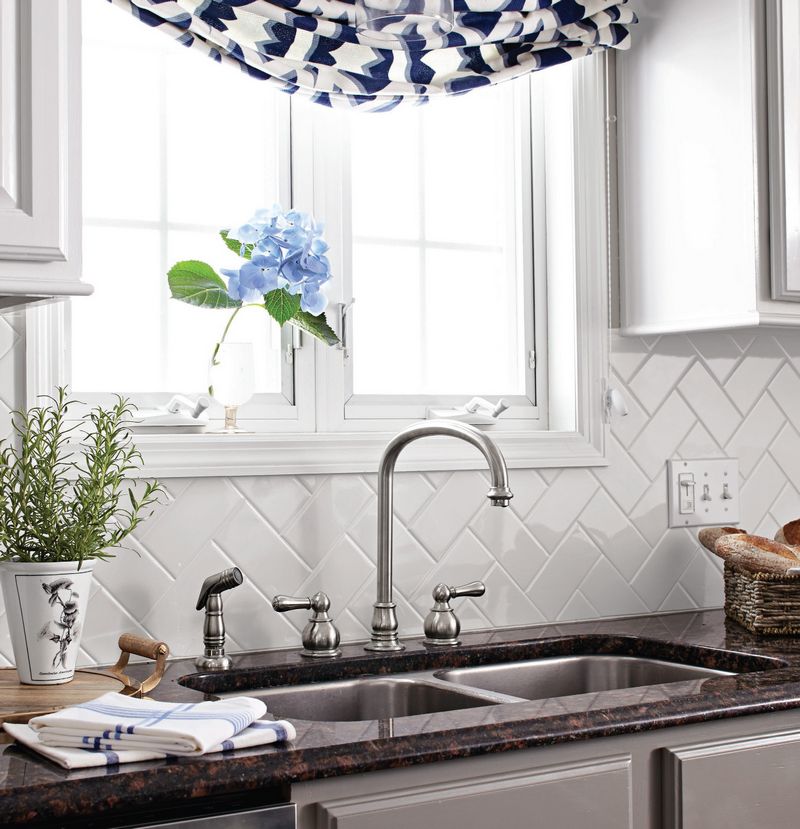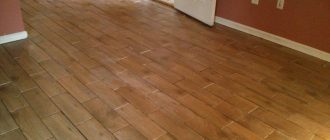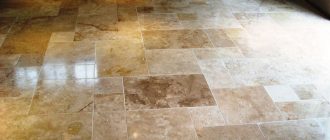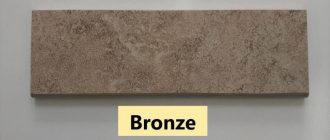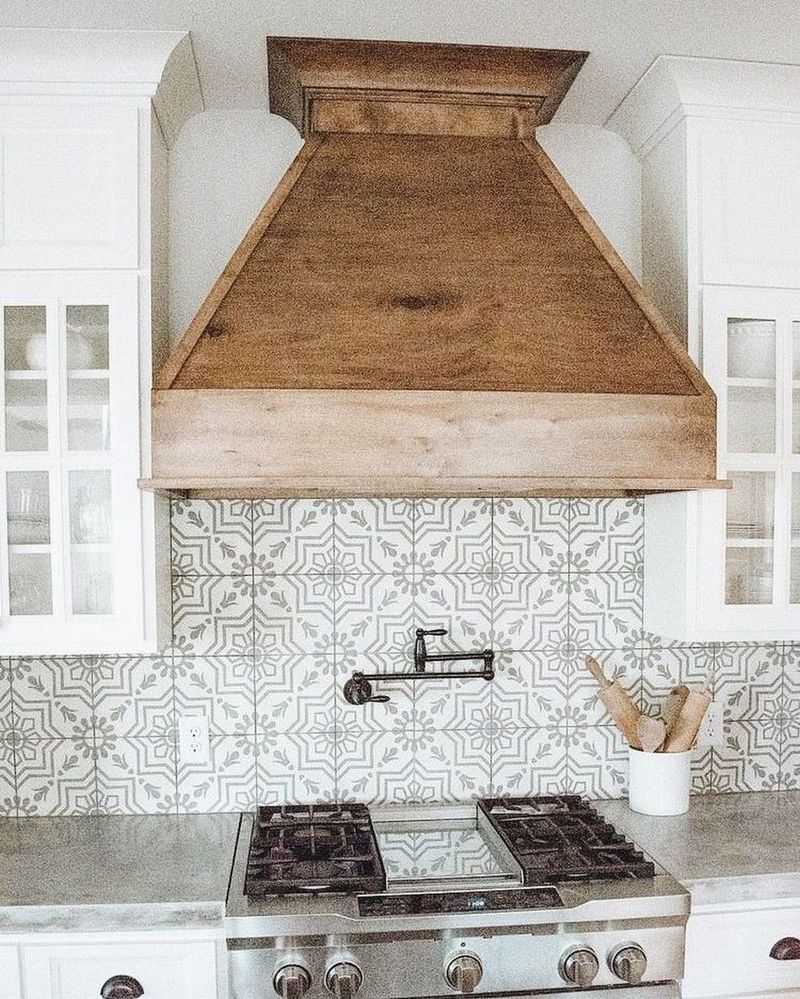
All About Tile Backsplashes
If you’re looking for a way to add style and functionality to your kitchen or bathroom, tile backsplashes are a fantastic option. Not only do they protect your walls from water and food splatters, but they also offer a wide range of design possibilities. With various patterns, colors, and materials to choose from, you can create a backsplash that perfectly complements your space.
When it comes to installation, it’s important to take your time and do it right. Properly measuring and preparing the wall surface, selecting the right adhesive, and laying out the tiles in a precise pattern are crucial steps for a successful installation. And don’t forget about grout! Choosing the right grout color can make a big difference in the overall look of your backsplash.
Maintenance is another key aspect of keeping your tile backsplash looking its best. Regular cleaning with a mild detergent and soft cloth will help to remove any dirt or grease buildup. It’s important to avoid using abrasive cleaners or scrub brushes that may damage the tiles or grout. If you notice any cracks or loose tiles, it’s best to address them as soon as possible to prevent further damage.
Whether it’s in the kitchen or bathroom, a tile backsplash can transform the look of your space. With endless design options and a little bit of planning and maintenance, you can create a backsplash that not only protects your walls but also adds a touch of style to your home.
Choosing the Perfect Tile Backsplash for Your Space
When it comes to designing your kitchen or bathroom, one of the most important decisions you’ll have to make is choosing the perfect tile backsplash. The backsplash not only serves as a protective barrier between your walls and countertops, but it also adds style and personality to your space.
There are several factors to consider when selecting a tile backsplash, including the design, pattern, and material. The first step is to determine the overall style of your kitchen or bathroom. Do you prefer a modern and sleek look or a more traditional and rustic feel? This will help you narrow down your options and choose a tile that complements the rest of your space.
Next, think about the size and shape of the tile. Larger tiles can make a space feel more open and spacious, while smaller tiles can add detail and texture. Consider the scale of your kitchen or bathroom and choose a tile size that fits well with the overall design.
Another important consideration is the color and pattern of the tile. Bold and vibrant colors can add a pop of personality to your space, while neutral tones can create a timeless and classic look. Consider the color of your countertops and cabinets, and choose a tile color that complements them.
Additionally, think about whether you want a simple and uniform tile pattern or a more intricate and decorative design. Subway tiles are a popular choice for a clean and classic look, while mosaic tiles can add visual interest and texture.
Once you’ve chosen the perfect tile backsplash for your space, it’s important to properly install and maintain it. Ensure that the grout is applied evenly and clean any excess grout off the tiles to prevent staining. Regularly clean the backsplash with a mild detergent and soft cloth to keep it looking its best.
In conclusion, choosing the perfect tile backsplash for your kitchen or bathroom involves considering the design, pattern, and material. Keep in mind the overall style of your space, the size and shape of the tiles, and the color and pattern. Don’t forget to properly install and maintain the backsplash to ensure its longevity and beauty.
Enhancing Your Kitchen with a Tile Backsplash
Adding a tile backsplash to your kitchen is a great way to enhance its design and functionality. Not only does a tile backsplash protect your walls from moisture and stains, but it also adds visual interest and style to your kitchen.
When choosing a tile for your backsplash, consider the overall design of your kitchen. You can select a tile that complements your countertops or cabinetry, or choose a bold and contrasting tile to make a statement. With a wide variety of tile options available, including ceramic, porcelain, glass, and natural stone, you can find a tile that suits your personal style and budget.
Once you have chosen the perfect tile, the installation process is key to achieving a professional and long-lasting look. Properly preparing the surface, using the correct adhesive and grout, and ensuring even spacing are all important steps in a successful installation. If you are not experienced in tiling, it may be wise to hire a professional to ensure the job is done correctly.
In addition to the design and installation, maintaining your tile backsplash is essential for keeping it looking its best. Regular cleaning with a mild detergent and soft cloth or sponge will help remove any grease or food splatters. It is important to avoid abrasive cleaners or scrub brushes that could scratch the tile surface.
To prevent dirt and grime buildup, it is recommended to seal your tile backsplash periodically. This will help protect the grout and keep it looking clean and new. Sealing the tile and grout also helps to prevent staining, especially in areas where there is high moisture or frequent cooking.
When it comes to the pattern of your tile backsplash, you have a range of options to choose from. Subway tiles, herringbone patterns, and mosaic designs are all popular choices that can add a unique and stylish touch to your kitchen. Consider the size and shape of your tiles, as well as the color and finish, when selecting a pattern that complements your kitchen aesthetic.
In conclusion, a tile backsplash is a versatile and practical addition to any kitchen. From the design options to the installation process and maintenance, there are many factors to consider when enhancing your kitchen with a tile backsplash. Take the time to choose the perfect tile, hire a professional if needed, and maintain your backsplash for a beautiful and functional kitchen feature.
Tile Backsplash Designs for a Modern Look
When it comes to designing a modern kitchen or bathroom, a tile backsplash can be the perfect addition to elevate the overall look. With a wide range of tile options available, you can create a unique and stylish design that fits your personal style. Here are some tile backsplash designs that will give your space a modern edge:
1. Geometric Patterns
One way to achieve a modern look is by incorporating geometric patterns into your tile backsplash design. This can be done using tiles that have shapes such as squares, triangles, or hexagons. Opting for a geometric pattern adds visual interest and creates a contemporary feel.
2. Subway Tiles
Subway tiles are a classic choice for a modern tile backsplash. Their clean lines and simple design make them a versatile option that can work well in any kitchen or bathroom. They can be installed horizontally, vertically, or in a herringbone pattern, allowing for various design possibilities.
3. Mosaic Tiles
Mosaic tiles are another great option for a modern look. These small tiles can be arranged in a variety of patterns and colors to create a unique and artistic design. Whether you choose a monochromatic color scheme or a bold mix of shades, mosaic tiles can add a pop of color and texture to your space.
4. Minimalist Designs
If you prefer a more minimalist look, opting for a solid colored tile backsplash can create a sleek and modern aesthetic. Whether you choose a glossy or matte finish, a solid color tile can complement any kitchen or bathroom design and create a clean and sophisticated look.
5. Contrast in Colors
Creating contrast in colors is another way to achieve a modern tile backsplash design. Pairing light-colored tiles with dark grout or vice versa can create a striking visual effect. This contrast adds depth and dimension to your space, making it feel more modern and visually appealing.
No matter which design you choose, it is important to consider the installation and maintenance of your tile backsplash. Proper installation and sealing of the tiles and grout are essential to ensure durability and longevity. Regular cleaning and maintenance should also be carried out to keep your tile backsplash looking its best.
In conclusion, a tile backsplash can transform the look of your kitchen or bathroom and add a modern touch to your space. Whether you choose a geometric pattern, subway tiles, mosaic tiles, or prefer a minimalist design, there are plenty of options available to suit your style. Just remember to pay attention to installation and maintenance to keep your tile backsplash looking fresh and stylish for years to come.
Creating a Classic Style with Tile Backsplashes
Tile backsplashes can add a touch of elegance and sophistication to any kitchen or bathroom. With their wide range of design options, patterns, and colors, you can easily create a classic style that will stand the test of time.
When it comes to designing a classic look with tile backsplashes, it’s important to consider the overall aesthetic of the space. Traditional patterns, such as subway or hexagon tiles, can instantly create a timeless feel. Opt for neutral colors like white, beige, or gray to maintain a classic and elegant look.
Installation is a crucial step in achieving a classic style with tile backsplashes. Properly aligning the tiles and ensuring clean grout lines can make a significant difference in the final result. Hiring a professional for installation is highly recommended to ensure the best possible outcome and longevity.
Maintenance is key to preserving the classic appearance of your tile backsplashes. Regular cleaning with mild soap and water will help prevent build-up and discoloration. Avoid using harsh chemicals or abrasive scrubbers that can damage the tiles’ surface.
Whether you’re updating your kitchen or bathroom, tile backsplashes can be an excellent choice for creating a classic style. Their versatility and durability make them a practical option for high-traffic areas. Consider incorporating patterned tiles or a herringbone design to add visual interest while maintaining a timeless look.
Remember, the key to creating a classic style with tile backsplashes is to focus on simplicity, quality materials, and a clean aesthetic. With careful planning and attention to detail during installation and maintenance, you can enjoy a timeless and elegant look for years to come.
Exploring Unique Tile Patterns and Colors
When it comes to designing a kitchen or bathroom backsplash, the tile pattern and color can make a big impact on the overall look and feel of the space. With so many options available, it can be overwhelming to choose the perfect design. However, exploring unique tile patterns and colors can add a touch of personality and style to your home.
One popular tile pattern is the subway tile. This classic design features rectangular tiles that are laid in a brick-like pattern. Subway tiles are known for their versatility and timeless appeal. They come in a variety of colors, including traditional whites and neutrals, as well as bold and vibrant options. Whether you choose a classic or modern look, subway tiles can complement any kitchen or bathroom design.
If you’re looking for something more unique, consider a herringbone pattern. This pattern is created by laying rectangular tiles in a zigzag pattern. The result is a visually striking look that adds depth and texture to any space. Herringbone patterns can be created with various tile colors, allowing you to customize the design to fit your personal style.
Another popular option is the mosaic pattern. Mosaic tiles are small, usually square, tiles that come in a variety of colors and materials, such as glass, ceramic, or stone. They can be arranged in endless patterns and can create intricate designs that become the focal point of the room. With mosaic tiles, you have the freedom to mix and match colors and materials to create a truly unique and eye-catching backsplash.
When it comes to choosing tile colors, consider the overall color palette of your kitchen or bathroom. If you have a neutral color scheme, you may want to choose tiles in a bold or vibrant color to add a pop of color to the space. On the other hand, if you have a bold color scheme, you may want to choose tiles in a more neutral or subdued color to balance out the design.
Once you’ve chosen your tile pattern and color, it’s important to consider the grout color. The grout is the material that fills the spaces between the tiles. Choosing a grout color that contrasts with the tile color can create a more defined and dramatic look. Alternatively, choosing a grout color that matches the tile color can create a seamless and cohesive look.
Installation and maintenance are also important considerations when choosing a tile pattern and color. Some patterns, such as mosaic or herringbone, may require more precise installation techniques. Additionally, certain colors may show stains or wear more easily, requiring more frequent maintenance. It’s important to choose a pattern and color that not only suits your design preferences but also fits your lifestyle and maintenance preferences.
In conclusion, exploring unique tile patterns and colors can add a personalized touch to your kitchen or bathroom backsplash. From classic subway tiles to intricate mosaic designs, there are endless options to choose from. Consider the overall design of your space, the color palette, and the maintenance requirements before making your final decision. With the right tile pattern and color, you can create a backsplash that is both functional and visually appealing.
Tile Backsplash Installation: Step-by-Step Guide
Installing a tile backsplash is a great way to add style and functionality to your kitchen or bathroom. With the right tools and a bit of patience, you can achieve a professional-looking installation. Here is a step-by-step guide to help you get started:
- Preparation: Before starting the installation process, make sure to turn off the power to any electrical outlets that may be affected. Remove any existing backsplashes or wallpaper and clean the wall surface thoroughly.
- Measurements: Measure the length and height of the wall area where you want to install the tile backsplash. This will help you determine the amount of tile and other materials needed.
- Layout: Plan the layout of your tile backsplash by creating a pattern or design. This will help you visualize the final result and ensure that the tiles are evenly spaced.
- Tile Selection: Choose the type and style of tile that best suits your design and preferences. Consider the size, color, and material of the tile, as well as its durability and maintenance requirements.
- Tile Preparation: Prepare the tiles by cutting them to fit the edges and corners of the backsplash area. Use a tile cutter or wet saw for precise and clean cuts.
- Adhesive Application: Apply a thin layer of tile adhesive to the wall using a notched trowel. Make sure to spread the adhesive evenly and only cover a small area at a time.
- Tile Installation: Press the tiles firmly onto the adhesive, starting from the bottom and working your way up. Use tile spacers to maintain consistent spacing between the tiles. Repeat this process until the entire backsplash area is covered.
- Grouting: Once the adhesive has dried, remove the tile spacers and mix the grout according to the manufacturer’s instructions. Apply the grout to the tile joints using a grout float, making sure to fill all the gaps.
- Cleanup: After the grout has set for about 10-15 minutes, wipe away the excess grout with a damp sponge. Rinse the sponge frequently and continue to clean until the tiles are free of grout residue.
- Finishing touches: Allow the grout to dry completely before applying a sealant to protect the tiles and facilitate maintenance. Finally, admire your beautifully installed tile backsplash!
Remember, proper installation and regular maintenance are essential for keeping your tile backsplash looking its best. Regularly clean the tiles with a non-abrasive cleaner and avoid harsh chemicals that can damage the surface. With proper care, your tile backsplash will be a stylish and functional addition to your kitchen or bathroom for years to come.
Tips for a Professional-Looking Tile Backsplash Installation
Installing a tile backsplash in your bathroom or kitchen can add a beautiful and functional element to your space. However, it’s important to follow a few tips to ensure a professional-looking installation.
- Plan your design: Before you start the installation process, take some time to plan out the design of your backsplash. Consider factors such as the size and shape of your tiles, the pattern you want to create, and any accent tiles you may want to incorporate.
- Prepare the surface: Properly preparing the surface is essential for a successful tile installation. Make sure the wall is clean, dry, and free of any dust or debris. If necessary, use a primer to create a smooth and even surface.
- Use the right tools: Investing in the proper tools can make a big difference in the quality of your tile installation. Make sure you have a tile cutter, trowel, grout float, and a level to ensure your tiles are straight and even.
- Choose the right grout color: The color of grout you choose can greatly impact the overall look of your backsplash. Consider selecting a grout color that complements your tiles and enhances the design of your space.
- Take your time with grouting: When it comes time to grout your backsplash, be patient and take your time. Spread the grout evenly and make sure it fills all the gaps between the tiles. Wipe away any excess grout with a damp sponge before it dries.
- Seal the grout: After your grout has dried, it’s important to seal it to protect it from stains and water damage. Follow the manufacturer’s instructions for applying a grout sealer, and reapply it as needed to maintain its protective benefits.
- Maintain your backsplash: Regular maintenance is key to preserving the beauty and longevity of your tile backsplash. Clean it regularly with a non-abrasive cleaner and soft cloth, and avoid using harsh chemicals that could damage the tiles or grout.
By following these tips, you can achieve a professional-looking tile backsplash installation that enhances the design of your bathroom or kitchen. Enjoy the beauty and functionality of your new backsplash for years to come!
Avoiding Common Mistakes in Tile Backsplash Installation
Tile backsplashes can add a beautiful and functional element to any kitchen or bathroom design. However, improper installation can lead to costly mistakes and headaches down the road. Here are some common mistakes to avoid when installing a tile backsplash:
- Poor planning and design: Before starting the installation process, it’s essential to carefully plan and design your backsplash. Consider factors such as the size, shape, and pattern of the tiles, as well as the placement of electrical outlets and switches. Creating a detailed layout before installation can help prevent mistakes and ensure a successful outcome.
- Using the wrong type of tile: It’s important to choose the right type of tile for your backsplash. Ceramic and porcelain tiles are popular choices due to their durability and easy maintenance. However, using glass tiles or natural stone tiles in a high-moisture area, such as a bathroom, can lead to potential damage or discoloration. Research the best tile options for your specific needs before making a purchase.
- Poor installation technique: Proper installation technique is crucial for a long-lasting and visually appealing backsplash. Avoid common mistakes such as applying too much adhesive, not using spacers for an even grout line, or failing to level the tiles. Taking the time to learn proper installation techniques or hiring a professional can ensure a successful and durable backsplash.
- Inadequate preparation: Properly preparing the surface before installing the tile is essential for a successful installation. Remove any existing residue or debris, and ensure the wall is clean, dry, and level. Applying a waterproof membrane or primer can also help prevent moisture damage and ensure the longevity of your backsplash.
- Poor grout application: The grout is a crucial element in tile backsplash installation. Improper grout application can lead to cracking, staining, or water penetration. Follow the manufacturer’s instructions carefully when mixing and applying grout, and use a grout sealer to help protect it from stains. Regular maintenance and resealing can help prolong the life of your grout.
By avoiding these common mistakes, you can ensure a successful and long-lasting tile backsplash installation. Take the time to plan, prepare, and use proper techniques to create a beautiful and functional addition to your kitchen or bathroom design.
Cleaning and Maintaining Your Tile Backsplash
Tile backsplashes are a popular choice for kitchens and bathrooms due to their durability and versatility. However, in order to keep your tile backsplash looking its best, regular cleaning and maintenance is necessary. Follow these tips to ensure your tile backsplash stays in pristine condition:
- Clean spills and stains promptly: Wipe up any spills or stains on your tile backsplash as soon as possible. This will prevent them from setting and becoming more difficult to remove.
- Use a gentle cleaner: Avoid using harsh chemicals or abrasive scrubbers on your tile backsplash, as these can damage the surface and the grout. Instead, opt for a mild dish soap or a tile cleaner specifically designed for your type of tile.
- Scrub the grout: Over time, grout can become discolored or stained. Use a soft-bristled brush or an old toothbrush to scrub the grout lines gently. For tougher stains, you can create a paste by mixing baking soda and water and applying it to the grout. Let it sit for a few minutes before scrubbing.
- Avoid abrasive materials: When cleaning your tile backsplash, avoid using rough sponges or steel wool, as these can scratch the surface of the tile. Instead, opt for a soft cloth or sponge.
- Seal the grout: To prevent future staining and discoloration, it is a good idea to seal the grout lines in your tile backsplash. This will help protect the grout and make it easier to clean. Consult with a professional on the best type of sealer for your specific installation.
- Regularly inspect for damage: Periodically check your tile backsplash for any cracked or chipped tiles. These should be repaired or replaced as soon as possible to prevent further damage.
By following these cleaning and maintenance tips, you can keep your tile backsplash looking beautiful for years to come. Whether you have a bold pattern or a simple subway tile design, proper care will help maintain the overall appearance of your kitchen or bathroom.
| Clean spills promptly | Wipe up spills immediately to prevent staining |
| Use a gentle cleaner | Avoid harsh chemicals; use mild dish soap or tile cleaner |
| Scrub the grout | Gently brush grout lines to remove stains |
| Avoid abrasive materials | Use soft cloth or sponge instead of rough sponges or steel wool |
| Seal the grout | Protect grout with a sealer to prevent staining |
| Regularly inspect for damage | Check for cracked or chipped tiles and repair as needed |
Repairing and Replacing Tiles in Your Backsplash
Backsplashes in kitchens and bathrooms are not only functional, but they also add design elements to the overall look of the space. However, over time, tiles in your backsplash may get damaged or become outdated. In such cases, repairing or replacing the tiles may be necessary to maintain the aesthetics and functionality of your backsplash.
Maintenance
To ensure the longevity of your backsplash tiles, it is important to regularly clean and inspect them. This will allow you to identify any cracked or loose tiles that may need to be repaired or replaced. Additionally, cleaning the grout between the tiles will help prevent mold and mildew growth.
Note: Before attempting any repairs or replacements, it is recommended to wear safety goggles and gloves to protect yourself.
Repairing Tiles
If you notice a cracked or chipped tile in your backsplash, you can consider repairing it rather than replacing the entire backsplash. Follow these steps to repair a tile:
- Remove the damaged tile by gently chiseling away the grout around it.
- Once the tile is removed, clean the area thoroughly by removing any debris or old adhesive.
- Apply a thin layer of tile adhesive to the back of the new tile and press it firmly into place.
- Allow the adhesive to dry completely, following the manufacturer’s instructions.
- Finally, reapply grout to the repaired area, making sure to match the color of the existing grout.
Replacing Tiles
If you have multiple damaged or outdated tiles in your backsplash, it may be necessary to replace them. The process of replacing tiles is similar to repairing them, but you will need to remove multiple tiles:
- Start by removing the grout around the damaged tiles using a grout saw or rotary tool.
- Once the grout is removed, use a chisel to carefully break and remove the tiles one by one.
- Clean the area thoroughly, removing any debris or old adhesive.
- Apply tile adhesive to the back of the new tiles and press them firmly into place.
- Allow the adhesive to dry completely.
- Reapply grout, making sure to match the color of the existing grout.
Conclusion
Repairing or replacing tiles in your backsplash is a great way to maintain its functionality and design. Regular maintenance and inspection will help identify any issues early on, allowing for timely repairs. Whether you choose to repair or replace, following the correct steps will ensure a successful outcome and a beautiful backsplash.
Adding Personality with Accessories and Accents
When it comes to tile backsplashes, the pattern and design of the tile are often the main focus. However, adding accessories and accents can truly enhance the overall look and give your kitchen or bathroom a unique personality.
Grout Color: One way to add personality is by selecting a contrasting grout color. This can create a beautiful and eye-catching effect, especially if you have chosen a simple tile design.
Decorative Tiles: Incorporating decorative tiles into your backsplash design can add a touch of elegance and charm. Whether it’s a mosaic pattern or a focal point design, these tiles can create visual interest and make your backsplash stand out.
Metal Accents: Another way to add personality is by incorporating metal accents into your backsplash. This can be done by using metal inserts or tiles with metallic finishes. The shimmer and shine of these elements can bring a modern and luxurious touch to your kitchen or bathroom.
Accessories: Don’t forget about the power of accessories! Adding decorative items such as plants, artwork, or even a floating shelf can make your backsplash feel more personalized. Just make sure to choose accessories that complement the style and design of your tile.
Maintenance: It’s important to keep in mind that when adding accessories and accents, you should consider the maintenance involved. Some materials may require more care and cleaning than others. Make sure to choose items that are easy to maintain and won’t damage your tile or grout.
| Metal inserts | Adds a touch of sophistication |
| Decorative mosaic tiles | Creates visual interest |
| Plants | Brings a natural touch |
| Artwork | Personalizes the space |
| Floating shelf | Provides additional storage |
In conclusion, adding personality to your tile backsplash is all about incorporating the right accessories and accents. From grout color choices to decorative tiles and metal accents, there are many options to explore. Just remember to consider maintenance and choose items that complement your overall design for a truly personalized look.
Questions and answers:
What are some design ideas for tile backsplashes?
There are many design ideas for tile backsplashes. Some popular options include using subway tiles for a classic and timeless look, choosing mosaic tiles for a more intricate and artistic design, and using patterned tiles to add visual interest to the space.
What is the best type of tile for backsplashes?
The best type of tile for backsplashes ultimately depends on personal preference and the overall design aesthetic of the space. However, ceramic and porcelain tiles are commonly used for their durability and versatility.
How do you install a tile backsplash?
To install a tile backsplash, you will first need to prepare the surface by ensuring it is clean and smooth. Then, you can apply adhesive to the wall and start placing the tiles. Once the tiles are in place, you will need to allow them to dry and then grout the spaces in between.
How do you maintain a tile backsplash?
Maintaining a tile backsplash is relatively easy. Regularly wiping it down with a mild cleaner and a soft cloth will help remove any dirt or grime. It is important to avoid abrasive cleaners or scrub brushes, as these can damage the tiles.
Can I install a tile backsplash myself or do I need to hire a professional?
While it is possible to install a tile backsplash yourself, it can be a complex and time-consuming process. If you are unsure of your DIY skills or if you have a large area to cover, it may be best to hire a professional to ensure a proper and seamless installation.
What is a tile backsplash?
A tile backsplash is a protective wall covering made of tiles that are usually installed in kitchens or bathrooms. It serves to protect the wall from water, oil, and food splatters, as well as adding aesthetic value to the space.
What are some design ideas for tile backsplashes?
There are many design ideas for tile backsplashes. Some popular options include using subway tiles for a classic look, mosaic tiles for a unique and colorful design, or patterned tiles for a bold and statement-making backsplash. You can also mix and match different types of tiles to create a personalized and one-of-a-kind look.

